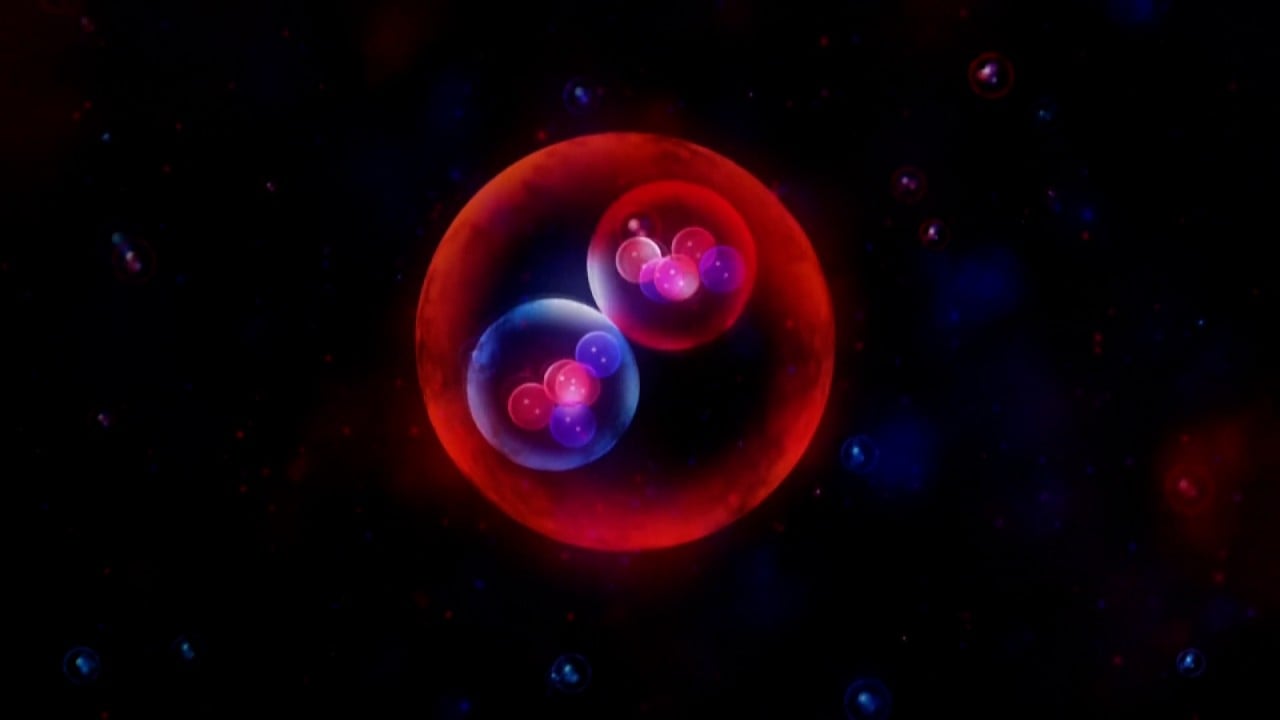
Chinese team develops purest, strongest tungsten material for fusion reactor, military applications
- Team at Chinese Academy of Sciences in Hefei says it has produced a large piece of pure tungsten with tensile strength greater than most alloys used today
- Applications include use in the US military’s ‘rods of God’ to China’s ‘artificial sun’ reactor
A pure, strong form of tungsten has been created, according to Chinese developers who say it can be used in kinetic energy weapons and nuclear fusion reactors.
The team at the Chinese Academy of Sciences in Hefei, Anhui province, said they had developed the strongest bulk material made of tungsten, reporting that the production technology would allow it to be used in the most demanding of applications.

Tungsten, one of the heaviest, hardest natural elements with the highest melting point (3,410 degrees Celsius) of all metals, can improve the performance of equipment used in extreme environments.
But it is also brittle. A component entirely made of tungsten powder cracks or breaks apart easily if stretched or under stress.
In most real-life applications, material scientists must add softer elements such as nickel, copper or iron to increase the product’s ductility.
In a paper published last month in Acta Materialia, a top-ranking international peer-reviewed journal, a research team led by professor Wu Xuebang of the Institute of Solid State Physics in Hefei said they had produced a large piece of pure tungsten with tensile strength reaching 1.35 gigapascals at room temperature – stronger than that of most tungsten alloys used today.
“The higher the tungsten purity, the lower the risk for fusion energy production,” professor Fang Qianfeng, a scientist involved in the study, said on Tuesday.
To produce energy, the fusion reactor would need to heat hydrogen gas to 150 million degrees Celsius, or 10 times hotter than the core of the sun.
The gas would be caged in a powerful magnetic field, but the inner wall of the reactor would still be exposed to high temperature, stress and radiation, an extremely hostile environment that most existing materials cannot tolerate.
A wall built with tungsten bricks can meet these challenges and keep a fusion power plant running for years, or even decades.
Scientists have been troubled for years by how to remove the other elements.
“In the best-case scenario, we want nothing but tungsten in the wall material because impurity can cause some unpredictable disturbance to fusion reaction,” Fang said.
The researchers said their technology also had military applications.
A warhead made of the new tungsten material, for instance, could pierce armour or concrete more effectively because of its improved strength and density.
During the Cold War, the US military proposed a space-based bunker buster commonly known as the “rods of God”. According to a design by the US Air Force in 2003, the system could launch a bundle of 6-metre (20-foot) long tungsten rods from orbit to destroy an underground target at 10 times the speed of sound.
China’s electric car battery makers race to extend ranges, lower costs
Each impact could generate as much energy as a small nuclear explosion, according to the calculation by US military scientists.
But because of tungsten’s brittleness, most armour-piercing ordnance produced by the US defence industry today includes depleted uranium for easier processing and better performance.
The use of tungsten in weapons is much more popular in China, according to a study by defence industry researchers published in the Chinese-language Journal of Ordnance Equipment Engineering in December last year.
A type of bullet made with a mixture of strong and brittle tungsten materials, for instance, was developed to destroy a heavily armoured AH-64A Apache attack helicopter with just one shot, said the researchers with Yichun Xianfeng Military Machinery company in Jiangxi province.
China has the world’s largest tungsten deposits. Chinese companies produced about 70,000 tonnes of tungsten in 2019, more than 80 per cent of the world’s total, according to US Geological Survey data.
The Hefei team said their new bulk material technology was relatively simple, and it could easily be scaled up for mass production.
Tungsten cannot be processed with casting because most industrial furnaces operate below 1,800 degrees Celsius, far below the metal’s melting temperature.
Instead, workers fill a mould with fine tungsten powder and heat it to over 2,200 degrees Celsius until the powder binds in the form of crystals.
Wu and his colleagues, however, reduced the temperature by more than a fifth, and then forged the tungsten with a hot, powerful hammer.
This unique processing method produced a crystal structure that no one had seen before, with the individual crystal size just a fraction smaller than normal and the crystals stacking in layers.
In these crystal layers some random but widely distributed cracks formed, according to the researchers.
Cracks are usually regarded as a disaster. But at the atomic level, these tiny fault lines allowed the crystals to move freely against one another, the researchers said.
Wu’s team said these movements could help absorb the energy of an impact, making the material strong but flexible.



